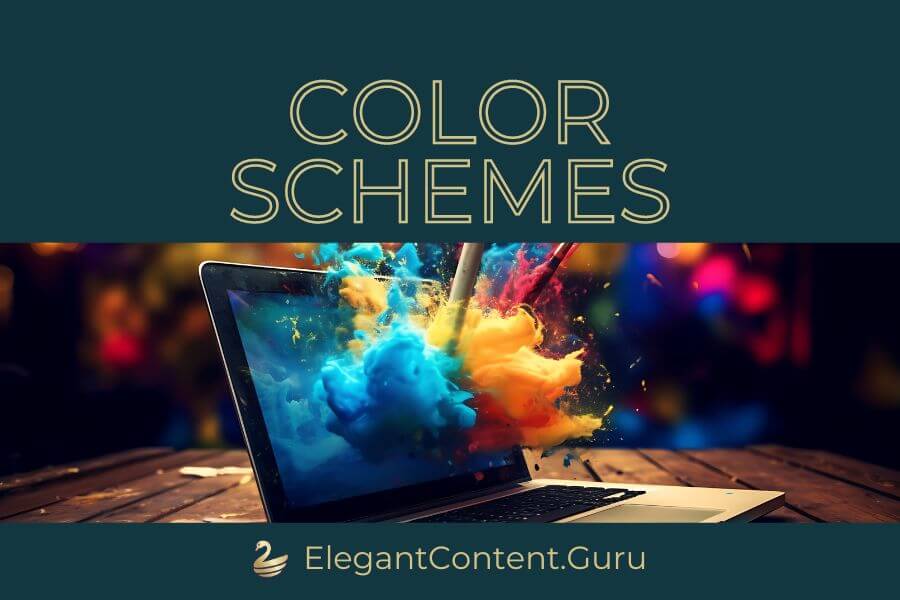Content design plays a vital role in creating powerful and impactful user experiences. Despite its significance, this valuable tactic is often underrated. However, when harnessed effectively, it significantly enhances user experiences, boost conversions, and increases brand awareness.
Understanding Content Design in UX/UI
In UX/UI, this refers to the strategic use of language and information within a user interface. It involves designing with words to ensure that the content presented to users is clear, concise, and compelling. While content can encompass various forms like text, images, videos, and more, in the context of UX/UI design, it primarily refers to written content that informs or persuades the audience.
It’s also responsible for shaping various elements of a user interface, such as:
- Menu copy
- Button copy
- Body text
- Headers
- Microcopy (short, instructional text)
- Instructions
By focusing on the language used in these elements, content designers can enhance the overall user experience and guide users through their journey.
The Distinction Between Content Design and UX Writing
Content design and UX writing are often used interchangeably as they share many similarities. In fact, both are integral parts of the design process, following style and brand guidelines, conducting user research, and creating the copy that appears in the user interface.
While the responsibilities overlap to a large extent, content design evolved as a distinct profession over the past two decades. Approximately 10% of the time, the term “content designer” is often confused with visual design. However, the majority of the responsibilities between UX writing and content design are the same, emphasizing the importance of words in the design process.
The Role of Content Designers and UX Writers
Content designers and UX writers collaborate with product teams to craft clear, concise, and compelling language within the user interface. Their responsibilities include:
- Collaborating with the product design team to solve design challenges
- Creating user-centric products and experiences
- Writing concise and compelling UX copy
- Simplifying complex concepts or language for users
- Constructing or following design systems and style guides
- Advocating for UX writing best practices
- Conducting user research and testing
- Making data-informed decisions
By working closely with other team members, content designers and UX writers ensure that the user interface effectively communicates the intended message and aligns with the brand’s voice and the user’s needs.
5 Important Points of Content Design in UX/UI
Of course, this plays a crucial role in UX/UI design as it provides clarity, appeals to users’ emotions, and builds brand recognition. By adopting a human-centered approach to writing, content designers can significantly impact the user experience.
Here are some key reasons why content design is important in UX/UI:
1. Clarity and Direction
Well-crafted content provides clear and concise information to users, helping them navigate through the user interface. It ensures that users understand the purpose and functionality of each element, reducing confusion and frustration.
2. Emotional Connection
Content has the power to evoke emotions and create a connection between the user and the brand. By using language that resonates with users, content designers can make users feel understood, valued, and engaged with the product or service.
3. Brand Identity and Differentiation
Brands establish and strengthen their identity. By aligning the copy with the brand’s values and personality, content designers add a layer of authenticity and uniqueness to the user interface. This helps the brand stand out from competitors and creates a memorable user experience.
4. Persuasion and Calls to Action
It’s also is instrumental in persuading users to take specific actions. With strategic calls to action (CTAs), content designers can guide users towards desired actions, such as making a purchase or signing up for a service. when well-crafted, it conveys value and encourages users to engage with the brand.
5. Accessibility and Usability
Content design plays a crucial role in making user interfaces accessible to a wider audience. By using clear and concise language, content designers ensure that information is easily understood by all users, regardless of their background or level of expertise. This enhances the overall usability of the interface.
Hallmarks of Effective UX/UI Content
To create impactful UX/UI content, It’s useful for content designers to for the following goals:
1. Seamless Blending
Good content seamlessly blends with the overall design of the user interface. It also blends in with the visual elements and does not stand out as separate or disjointed. Content should enhance the user experience without drawing unnecessary attention to itself.
2. Clarity and Value
For the best effect, ensure that every word provides value to the user. This involves focusing on concise and meaningful information that helps users achieve their goals. Moreover, clear and valuable content results in easy navigation, instructions, and better brand awareness.
3. On-brand Messaging
On-brand messaging involves aligning their copy with the brand’s voice and style. By following style guides and using consistent language, a cohesive and easy to recognize brand experience is created. In addition, on-brand messaging adds personality, builds trust, and reflects the brand’s values.
4. Persuasiveness
Use persuasive content that encourages users to take action. Impactful calls to action (CTAs) serve to guide users towards specific behaviors or decisions. By using persuasive language and storytelling techniques, content designers emotionally connect with users and motivate them to engage with the interface.
5. Brevity
However, in the context of user interface copy, less is often more. Micro-copy, which refers to short snippets of text, is a great way to intuitively guide users without overwhelming them. In this way, designers deliver concise and effective messages that support the user’s journey.
Stellar Examples of UX/UI Content
Let’s explore some stellar examples of UX/UI content that showcase the power of content design:
1. Apple
Apple is renowned for seamlessly integrating content designers into their product teams. Their microcopy, carefully crafted and aligned with user needs, reflects their user-centric approach. Apple’s use of precise language, rhymes, and persuasive messaging sets them apart as a leading example of effective content design.
2. Airbnb
Airbnb excels in using brevity and personality in their microcopy. They go beyond generic labels and provide concrete examples to guide users. By showcasing various possibilities and destinations, Airbnb’s content engages users and makes their experience more personalized and enjoyable.
3. Grammarly
Grammarly’s call to action on their homepage is concise yet powerful. By highlighting the immediate benefit of using their service (it’s free), they build trust and engage users. Grammarly’s copy continues to be clear and concise throughout the user journey, effectively communicating the value of their product.
4. You Need A Budget (YNAB)
YNAB demonstrates excellent copywriting in their subscription error page. They use language that conveys personality, reassures users, and provides context. YNAB’s content design creates an authentic and engaging experience that connects with users on an emotional level.
5. Slack
Slack’s content design shines through their interactive chatbot, Slackbot. The content written for Slackbot reflects the brand’s voice, provides assistance, and adds a layer of personality to the user interface. By seamlessly integrating content with function, Slack excellently enhances the overall user experience.
Embracing the Importance of Content Design
In conclusion, content design is a powerful component of UX/UI design. By focusing on creating clear, valuable, and persuasive content, designers significantly enhance the user experience, build brand recognition, and create meaningful connections with users.
Content designers shape user interfaces, collaborate with various teams to ensure that content meets user needs and aligns with the brand’s voice. They harness the principles of content design in which organizations can create user-centric products, guide users through their journey, and ultimately achieve their business goals.
Conclusion
So, whether you’re a UX/UI designer, content designer, or simply someone interested in creating impactful user experiences, remember the power of content design and its ability to transform interfaces into immersive and engaging brand interactions.













